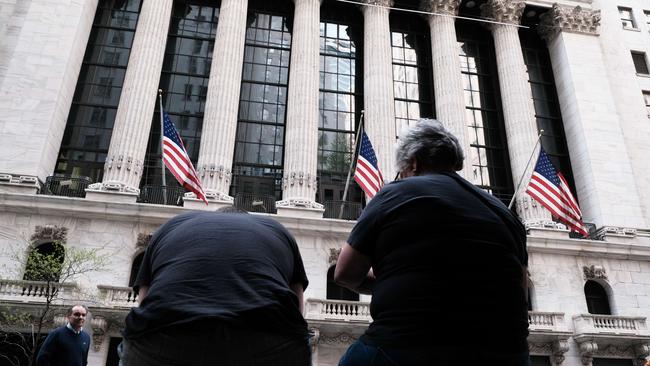Stocks slide to lowest in 2022 as rout continues
A broad sell-off on Wall Street accelerated Monday, leaving investors with few places to shelter from the market’s tumult.

A broad selloff in US stocks accelerated Monday, leaving investors with few places to shelter from the market’s tumult.
Major indexes fell to their lowest levels of the year to date, with the S&P 500 declining 3.2 per cent, adding to losses after closing out its longest streak of weekly declines since 2011. The Nasdaq Composite tumbled 4.3 per cent and the Dow Jones Industrial Average shed 2 per cent.
Markets have been shaken this year by a flurry of investor worries. Inflation is running at its fastest pace in decades. That has forced the Federal Reserve to kick off what economists anticipate will be its most aggressive monetary policy tightening campaign since the 1980s. Investors are questioning whether the Fed will be able to pull off its planned course of interest-rate increases and cuts to its balance sheet without tipping the economy into recession.
Economists surveyed by The Wall Street Journal last month estimated the probability of the U.S. economy being in recession sometime in the next 12 months was 28 per cent. That was up from 18 per cent in January.
Many money managers are also worried about the global economic outlook. China’s implementation of lockdowns to contain the spread of Covid-19 and Russia’s war against Ukraine have bolstered concerns of supply-chain disruptions and reduced consumer spending.
“The US equity market is quite expensive, particularly technology stocks. The market doesn’t know how high the Fed has to go to control inflation, and we have the sense of a global slowdown,” said Sebastien Galy, a macro strategist at Nordea Asset Management. “There’s a lot of negatives that are happening in the market.” Selling hit most sectors of the S&P 500 on Monday, dragging lower everything from shares of manufacturers to bank stocks to even energy producers, a relative bright spot this year.
Facebook parent Meta Platforms fell 3.8 per cent, while Amazon.com lost 5.2 per cent and Apple shed 3.3 per cent. Technology stocks have been particularly hard hit by this year’s selling because rising rates have made some investors reluctant to put money in parts of the market that look expensive.
Industrial stocks took a hit as well. Many investors are worried that rising inflation, tightening monetary policy and continued supply-chain disruptions around the world will weigh on economically sensitive sectors. Caterpillar fell 3.9 per cent while Boeing lost 10.5 per cent.
Even parts of the market that had held up relatively well retreated Monday. The S&P 500 energy sector slumped 7.9 per cent in the afternoon.
Energy shares had soared for the past few months alongside oil prices. But lately, some traders have begun to worry that lockdowns to contain the spread of Covid-19 in China will sap global demand for the commodity. That has taken some steam out of the rally. US crude oil fell 6.1 per cent to $US103.09, logging its worst day since March.
“The market volatility shows that there is great uncertainty about where people think we are headed,” said Peter Andersen, founder of Boston-based investment firm Andersen Capital Management.
The prospect of further interest-rate increases to combat inflation has some investors worried that such measures will slow economic growth.
Those fears have led some money managers to hold the dollar, seen as a safer investment in times of volatility, due to its status as the world’s reserve currency. The WSJ Dollar Index, which measures the US currency against a basket of 16 others, edged up 0.3 per cent Monday.
Overseas, the pan-continental Stoxx Europe 600 fell 2.9 per cent in its fourth consecutive session of declines. Monday marked the index’s worst day since March.
In Asia, Japan’s Nikkei 225 dropped 2.5 per cent, while Australia’s S&P/ASX 200 fell 1.2 per cent.
China’s CSI 300 index, tracking the largest companies listed in Shanghai or Shenzhen, declined 0.8 per cent. Hong Kong markets were closed for a public holiday.
Meanwhile, selling pressure in US government bonds eased up, although bond yields remained near multiyear highs.
The yield on the benchmark 10-year Treasury note was at 3.080 per cent on Monday, compared with 3.124 per cent on Friday. The 10-year yield had risen 1.6 percentage points since the end of 2021 through Friday, leading some investors to reassess the valuations of technology and growth stocks. Bond yields rise when prices fall.
The Wall Street Journal


